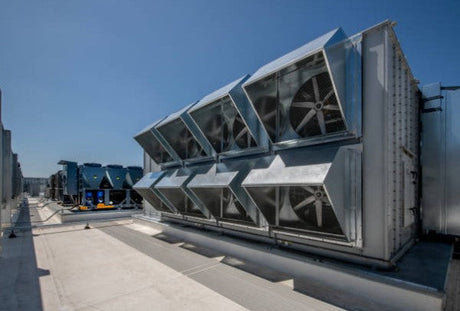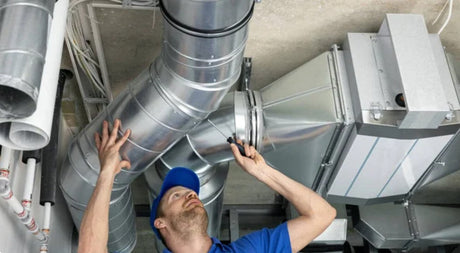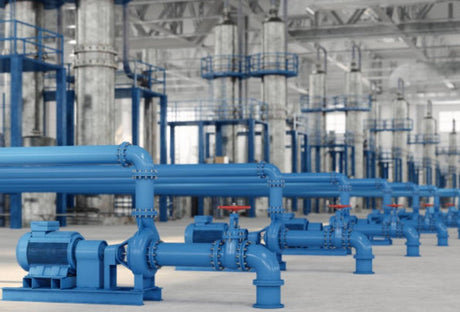Play in the world of industrial measurement technology Temperature sensor A crucial role in monitoring and regulation of thermal processes. Your selection requires a precise consideration of various technical parameters to ensure the quality and efficiency of applications. In this guide we examine the essential criteria that technicians and engineers should consider when choosing temperature sensors.
-
Construction of the temperature sensor: The physical design of the temperature sensor is a crucial criterion that determines the installation and function in different measurements. With its Thermguard® series, Seikom Electronic offers a variety of designs that are on various requirements - be it in industrialists or in HLK area - are tailored.
- Outside temperature sensor: These are specially designed for use in the open air and resist weather influences and temperature fluctuations in the outdoor area.
- Room temperature sensor: They capture the temperature indoors and are designed for aesthetics and the need for an inconspicuous integration into building management systems. Often stand Room temperature sensor also as combination devices for simultaneous measurement of temperature, Pressure, humidity, Air quality (VOC) and CO2.
- Diving temperature sensor (canal temperature sensor): These sensors are designed to be immersed in liquid or gaseous media or to be installed in air channels in order to measure the temperature there. They are often used in connection with a diving sleeve, so that the sensors can be checked and maintained without interrupting the process to be monitored.
- Investoring temperature sensor (contact temperature sensor): They are aimed at measuring the surface temperature of pipelines or containers by creating directly on the surface to be measured.
- Temperature switch: These components not only serve the measurement, but also act as a switch that becomes active when a certain temperature value is reached. In this way, defined minimum or maximum values can be easily monitored.
- Temperature current converter: They convert the measured temperature into a current signal that is used for further processing or display.
- Resistance thermometer: They use the property that the electrical resistance of a metal alloy changes with the temperature in order to make very precise measurements.
- Thermo elements: These consist of two different metals connected to one end. They use the seabeck effect for temperature measurement and are particularly suitable for high temperatures and fast reactions.
-
Measuring area
An adequate sensor must be able to precisely record the temperature fluctuations occurring in the respective application. Check the specifications of different temperature sensors to ensure that the sensor can cover the required temperature range. -
Output signal
Make sure that the temperature sensor is compatible with existing measurement and control systems. Modern temperature sensors offer a wide range of communication options. The most common output signals in industrial measuring and control technology include analog outputs (4-20 MA and 0-10 V) and digital outputs such as Modbus. -
Accuracy and resolution
Depending on the area of application of the temperature sensor, the accuracy is an aspect that is not too negligible. The resolution indicates how finely the measured values are dissolved. High accuracy and resolution are essential, especially in precision applications. -
Ambient conditions
Take into account the ambient conditions to which the temperature sensor will be exposed. Factors such as moisture, pressure, chemical influences and mechanical loads influence the choice of the appropriate sensor housing and the sensor material. -
Sensor type
There are different types of sensors, including Thermo elements, Resistance temperature sensor (RTDS), semiconductor sensor and infrared sensors. Each of these temperature sensors has specific properties that predestine it for certain industrial areas of application. Choose the sensor type that best suits your specific application. -
Response
The response behavior, or the response time, is also a critical selection criterion. This is about the time the temperature sensor needs to react to temperature changes. In dynamic processes, where the temperature changes quickly, quick response times are required. -
Certification and evidence
Compliance with industrial standards and certification evidence is another critical feature in the choice of temperature sensors. These evidence certifies the quality and process fidelity of the sensors produced and guarantee that they meet certain standards and quality requirements. Plant certificates are an important part of companies that have to document their quality assurance processes. They are particularly relevant in areas such as the pharmaceutical, food or chemical industry, where traceability and compliance are required. Seickom Electronic offers factory and acceptance test certificates free of charge for a variety of its products- we underline our commitment to the highest quality standards and customer satisfaction.
-
Factory certificate according to EN 10204-2.2: The factory certificate 2.2 is an explanation of the manufacturer in which it is confirmed that the products delivered meet the requirements of the order and that test results are available based on non -specific exams. It is a general confirmation that the sensor has been manufactured according to common specifications.
- Acceptance test certificate according to EN 10204-3.1: The acceptance test certificate 3.1 also includes targeted test results, which are confirmed by authorized personnel regardless of production. There is information about the chemical composition and the mechanical properties of the materials used. This certificate guarantees that each individual sensor has been subjected to specific exams and found to be good.






